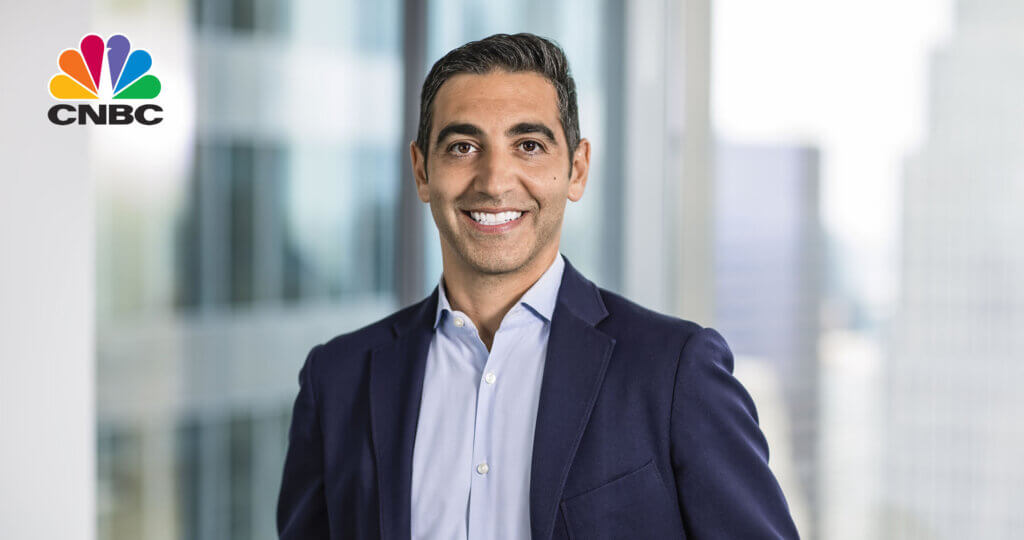I’ve been doing this fifty-four years. With a little experience, I might get better.
-Harry Caray, former Chicago Cubs baseball announcer
Sportswriters are calling this year’s NFL season the Year of the Rookie Quarterback. More games have been started by rookie QBs than in any previous season. Five teams have started a rookie in every game, and three (Indianapolis, Seattle and Washington) made the playoffs after sub .500 seasons last year. The Rookie of the Year is almost certain to be either Andrew Luck of Indianapolis or Washington’s Robert Griffin III. As a fan, it is exciting to see new blood having such a dramatic impact on the sport. But when the talk turns to MVP, the names that keep getting mentioned are old-timers – Peyton Manning, 36, and Tom Brady, 35. And it isn’t just football where the veterans are shining: the New York Mets’ R. A. Dickey, 38, won the Cy Young award, and the New York Knicks are off to their best start in years, despite sporting the oldest roster in NBA history, averaging just shy of 33 years old. These are pretty heady accomplishments for stars in the twilight of their careers.
At Oakmark, we are long-term investors. We attempt to identify growing businesses that are managed to benefit their shareholders. We will purchase stock in those businesses only when priced substantially below our estimate of intrinsic value. After purchase, we patiently wait for the gap between stock price and intrinsic value to close.
Professional sports is a young person’s arena. Most players retire by their mid-30s, an age beyond which it is difficult for the benefit of experience to offset inevitable physical decline. Jeff Passan, wide ranging sports columnist best known as an author of the provocative book Death to the BCS: The Definitive Case against the Bowl Championship Series, lamented in a recent article about the post-season collapse of the New York Yankees:
“At this point, all that’s left of (37-year-old) Alex Rodriguez’s baseball career is the hope that modern medicine can save him from a body that keeps betraying him…”
“Nine players on the Yankees’ roster have eight-figure contracts, and among them … they will make $159 million. Their average age is deceased. Fine, it’s 35.6 years old. That is the mean age of the Yankees’ core: a retired player.”
It must be tough at 37 years old to realize that you are already past your profession’s average age of retirement, and that even a successful surgery won’t guarantee your ability to continue playing. Some advisors who invest in The Oakmark Funds for their pro-athlete clients say one of their biggest challenges is finding productive pursuits for retired players who still have 50 years of life expectancy ahead of them.
Contrast that to the industry that reports on sports. The late voice of the Chicago Cubs, Harry Caray, didn’t announce his first professional baseball game until the age of 31. He didn’t announce his first Cubs game until he was 67, and his popularity was still rising when he died at the age of 84. Clearly, sports reporting is a business where another year’s experience more than offsets another year’s physical decline until a very advanced age.
The career arc in investing is much closer to sports reporters than to pro athletes. An article in The Wall Street Journal last quarter, “Funds Prepare for Eventual Succession,” focused on six well known mutual funds that have been managed for a long time by industry stars. Five of the portfolio managers were in their 70s. The article also included our friend Wally Weitz, despite him being nearly a decade younger than the others. Each of the six managers said that they have no plans to retire, yet all six emphasized that they have structured their firms so that their funds can continue after they do eventually depart.
Succession planning is difficult in both sports and business. Notre Dame football coach Brian Kelly, who has his Fighting Irish competing for this year’s BCS championship, has become known for his slogan, “Next man in.” When one player gets injured, his backup needs to be able to step in without the team missing a beat. This requires intensive practice for players who are unlikely to see action. But it also means that neither Kelly nor his players see injuries as an excuse to lower expectations. In the NFL, when Washington’s rookie quarterback RG3 got injured, the next man in was another rookie, Kirk Cousins, who stepped up to lead the Redskins to back-to-back victories in must-win games.
The same preparation occurs in the best run companies. One of Oakmark’s holdings, McDonald’s, has long been known for its emphasis on succession planning. All McDonald’s managers are expected to have at least two candidates capable of immediately replacing them in an emergency. Several years ago, tragedy struck McDonald’s when two CEOs died within nine months of each other, but the company didn’t have to name interim CEOs or conduct external searches for replacements. Instead, they went to their bench, named their “next man in,” and the company didn’t skip a beat. McDonald’s non-executive chairman, Andrew McKenna, summed it up: “Part of the Boy Scout motto is ‘Be prepared.’ You have to be ready for that moment you don’t want to happen.”
At Oakmark, we try to emulate the best practices we observe in successful organizations, including succession planning. Many investment firms are run with very small staffs and will simply fade away when key people are no longer there. We have always strived to build an enduring business that will thrive after today’s key people are long gone. We are a very small organization relative to McDonald’s, and culturally we would not be well served by the many management layers that work so well for McDonald’s. But when our board reviews our operations, we are always asking whether or not the “number two” in each department would be capable of stepping in as “number one” if needed. And “if needed” has to cover a planned retirement or an emergency. If the answer isn’t “yes,” we strengthen our bench by either hiring people or more fully developing our current employees. The discussion is the same whether we are reviewing our back office or our analysts and portfolio managers. Our people aren’t planning to leave, but just like sports teams and the companies we invest in, we have to be prepared for events we don’t want or expect to happen.
In 2012, two Oakmark portfolio managers left our firm – Ed Studzinski from Oakmark Equity and Income Fund and Henry Berghoef from Oakmark Select Fund. Both contributed significantly to the funds they managed, and both were in their 60s and looking forward to retirement. When they announced their respective departures, Clyde McGregor and I, the continuing managers on those two funds, looked to our team of investment professionals to determine which individuals we thought could best replace our departed co-managers.
Oakmark’s investment team has become extremely deep, and Clyde and I both quickly found that our decisions would be difficult because we had an embarrassment of riches: We each had many candidates we believed were prepared to step into these roles. You should also know that throughout this selection process, though only one manager was publically disclosed on each fund, we had more eyes watching each fund than ever before. You can read about Oakmark Select’s new co-managers in its shareholder report, and Clyde will discuss his decision at some point after he whittles down his list.
Clearly, these manager departures weren’t emergencies. We are keenly aware that this process occurred under near ideal conditions that didn’t test us as deeply as an emergency would have. But if we were confronted by an emergency, the process would be the same: more people would be working on the fund on the day after the emergency than on the day before, and we would gradually cut back the participants until we had identified who would best manage the funds in the future.
Publically discussing succession seems to invite the question, “Who is thinking of leaving?” None of us are. Rather, like McDonald’s, we have prudently prepared for events we don’t want to happen. None of today’s Oakmark portfolio managers are as old as the youngest manager mentioned in the Journal’s piece on succession (and our new co-managers will be much younger). None of us are aware of any serious health issues. None of us have a burning desire to embark on a new career. And most important, we like what we do and the people we do it with.
Warren Buffett refers to “skipping to work each day.” I like to think of it the way ex-big leaguer Jim Bouton talked about pitching. Bouton pitched for nine seasons in the 1960s, mostly for the New York Yankees. As a Yankee, he won a World Series in 1962 and was an All-Star in 1963. Despite achieving the pinnacle of his profession, after retiring in 1970, partly due to his controversial book Ball Four, he missed the game so much that he worked his way back to the majors. In 1978, he pitched one final season for the Atlanta Braves when he was a year older than R.A. Dickey was last season. Looking back on his career, Bouton said, “A ballplayer spends a good piece of his life gripping a baseball, and in the end it turns out that it was the other way around all the time.”
Investing is an equally gripping endeavor. All of us Oakmark managers realize how lucky we are to love our jobs.
As of 12/31/12, McDonalds Corp. represented 0.9% and 0% of the Oakmark Fund and Oakmark Select Fund’s respective net assets. Portfolio holdings are subject to change without notice and are not intended as recommendations of individual stocks.
The Oakmark Fund’s portfolio tends to be invested in a relatively small number of stocks. As a result, the appreciation or depreciation of any one security held by the Fund will have a greater impact on the Fund’s net asset value than it would if the Fund invested in a larger number of securities. Although that strategy has the potential to generate attractive returns over time, it also increases the Fund’s volatility.
Because the Oakmark Select Fund is non-diversified, the performance of each holding will have a greater impact on the Fund’s total return, and may make the Fund’s returns more volatile than a more diversified fund.
The discussion of the Funds’ investments and investment strategy (including current investment themes, the portfolio managers’ research and investment process, and portfolio characteristics) represents the Funds’ investments and the views of the portfolio managers and Harris Associates L.P., the Funds’ investment adviser, at the time of this letter, and are subject to change without notice.






